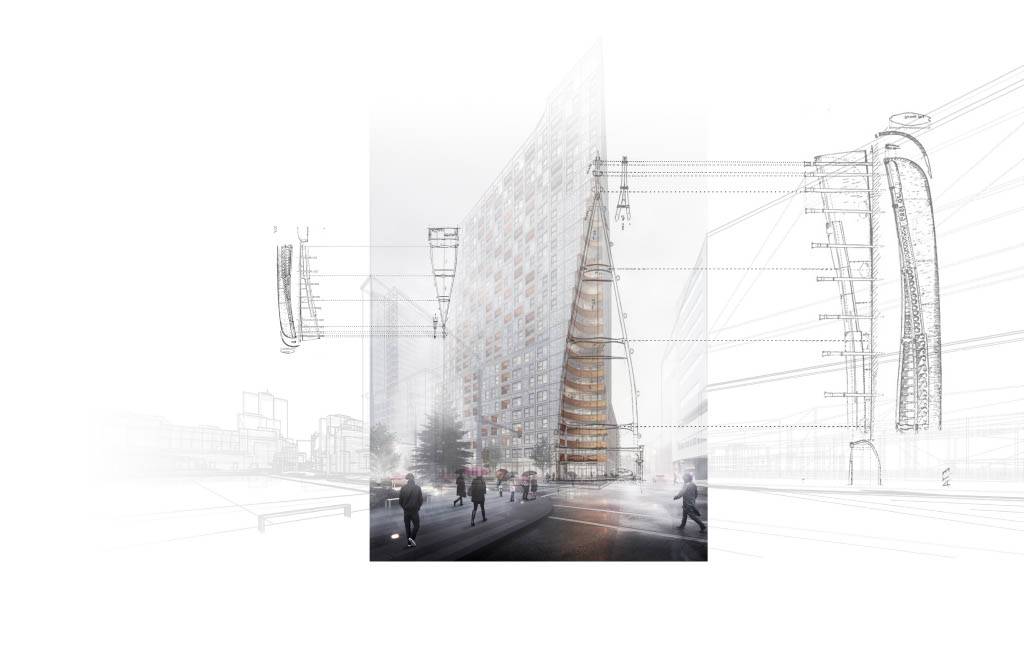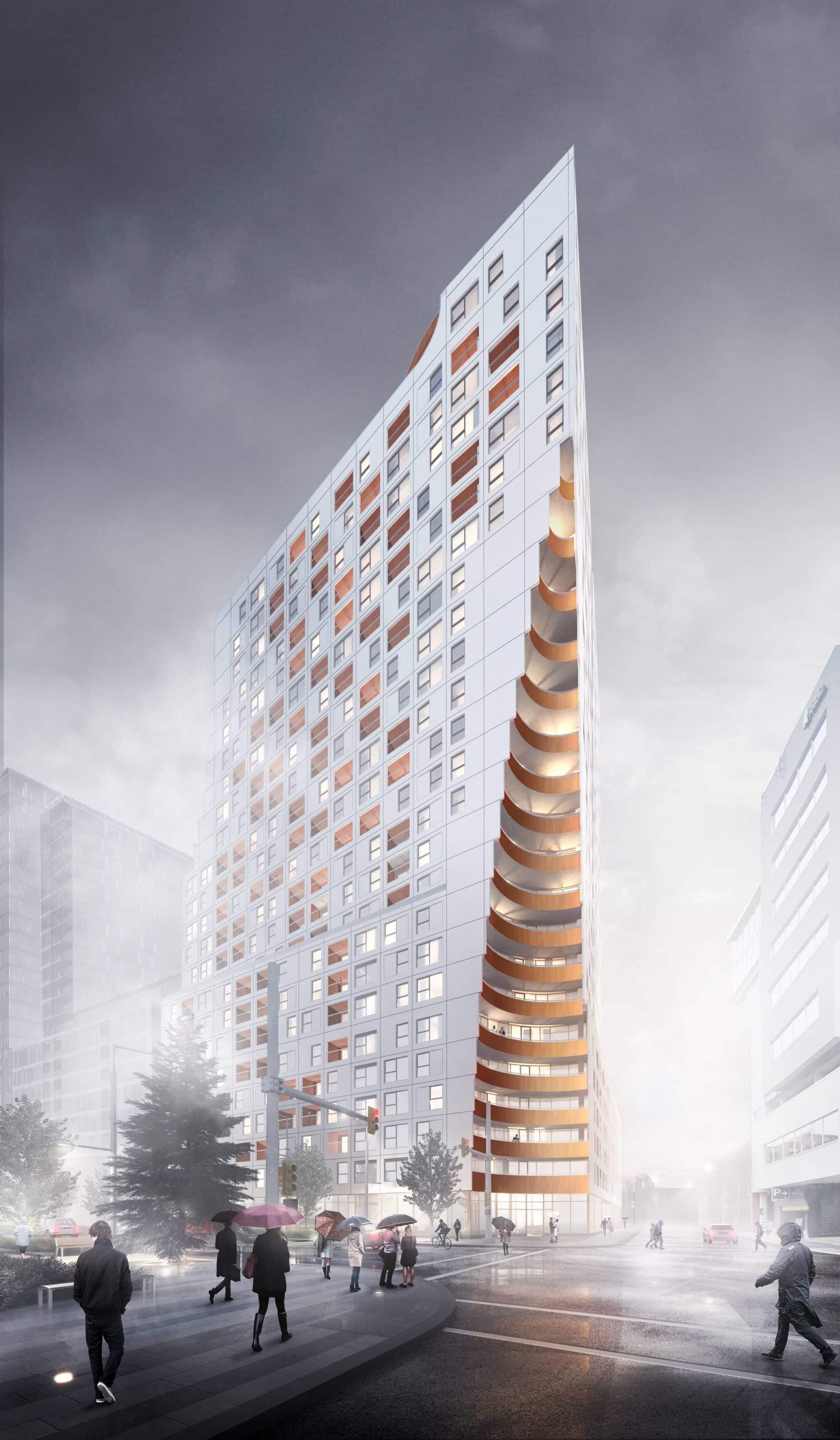When Cree identity shapes tomorrow’s architecture
Client
Cogir & Cree Regional Economic Enterprises Company (CREECO)Location
Montreal, QC, CanadaYear
In progress-
Discipline(s)
Architecture
Landscape Architecture
Structural Engineering
Sustainability
Urban Planning
When Cree identity shapes tomorrow’s architecture
At the gateway to downtown Montreal, the Odea project stands out with architecture that embeds Cree identity into the contemporary landscape. The design of this mixed-use complex is rooted in a collaborative approach, where cultural dialogue enriches the architectural vision, shaping a distinctive and inspiring signature.
The synergy between architects, urban designers, landscape architects and sustainability experts has fostered an exceptionally creative design process, sensitive to the traditions and aspirations of the Cree community. This collaboration, enriched through exchanges with architect Douglas Cardinal, has given rise to an architectural expression that is both authentic and contemporary.
The design draws its strength from two evocative symbols: the canoe and the tree. The project’s name, Odea, is inspired by the Cree word “Ode” (canoe), whose emblematic form sculpts the building’s silhouette on two of its façades.
The tree, in turn, is reflected in the project’s materiality and spatial composition. The outer envelope, like a protective bark, echoes from the hues of birch—an emblematic species of the boreal forest. Light on the surface, it recalls the outer layers of the tree once harvested to craft canoes. Deeper inside, warm tones recall sapwood while the courtyard at the heart of the project is encircled by striations that suggest tree growth rings.
The project is rooted in both physical and cultural territories, embodying a deep commitment to sustainability and heritage. This is reflected through the implementation of the Net Positive™ approach, which prioritizes environmental protection, carbon emission reduction, and the health and well-being of users throughout the project. The conservation and integration of two heritage buildings within the complex significantly furthers this aim.
At the intersection of the river-mountain axis and the cultural corridor linking Griffintown to Old Montreal, Odea aims to be a new significant anchor point for the urban community. This new urban hub emerges from the seamless integration of diverse expertise, driven by a shared commitment to transformation.


